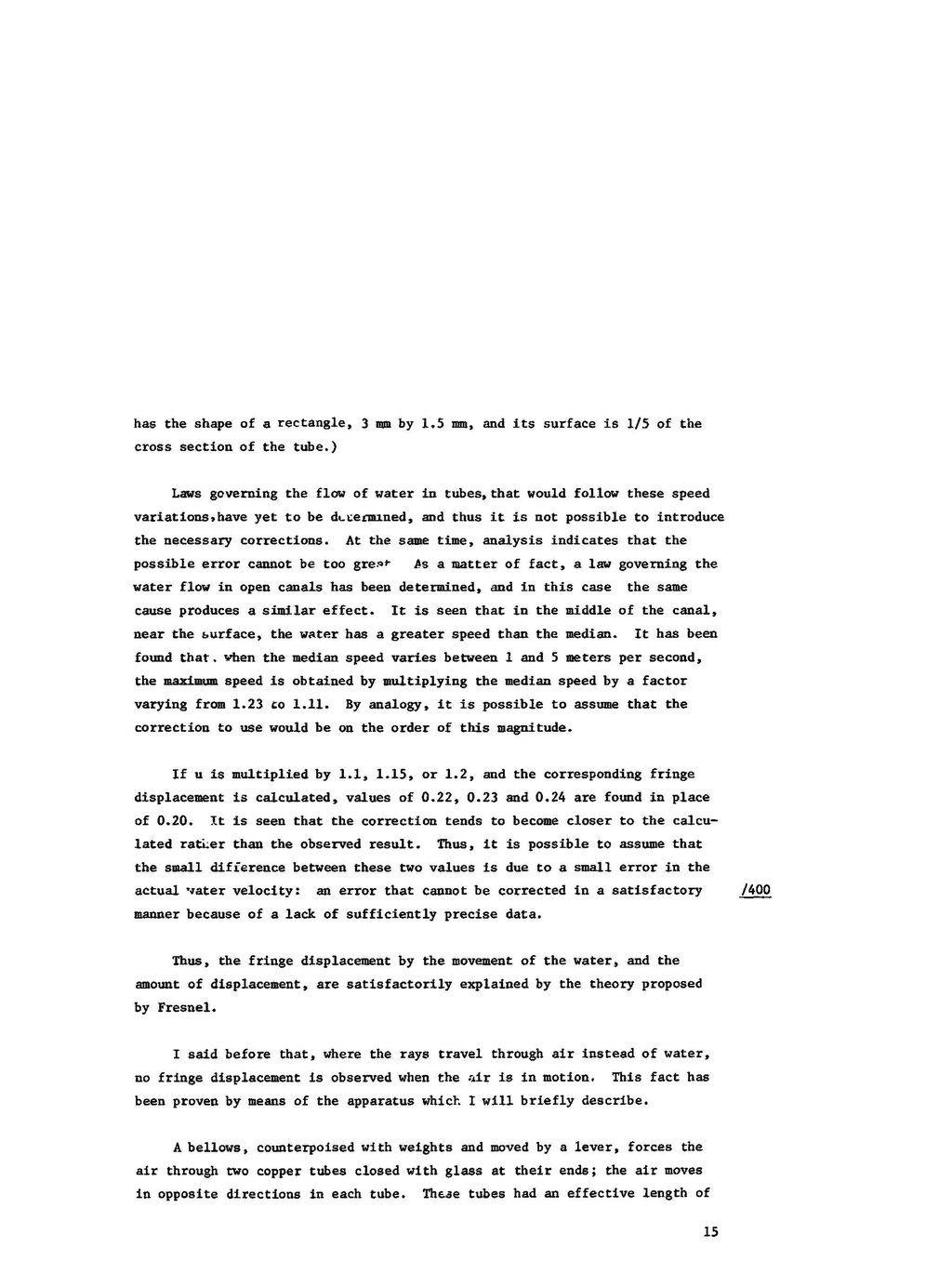has the shape of a rectangle, 3 mm by 1.5 mm, and its surface is 1/5 of the cross section of the tube.)
Laws governing the flow of water in tubes, that would follow these speed variations, have yet to be determined, and thus it is not possible to introduce the necessary corrections. At the same time, analysis indicates that the possible error cannot be too great. As a matter of fact, a law governing the water flow in open canals has been determined, and in this case the same cause produces a similar effect. It is seen that in the middle of the canal, near the surface, the water has a greater speed than the median. It has been found that, when the median speed varies between 1 and 5 meters per second, the maximum speed is obtained by multiplying the median speed by a factor varying from 1.23 to 1.11. By analogy, it is possible to assume that the correction to use would be on the order of this magnitude.
If u is multiplied by 1.1, 1.15, or 1.2, and the corresponding fringe displacement is calculated, values of 0.22, 0.23 and 0.24 are found in place of 0.20. It is seen that the correction tends to become closer to the calculated rather than the observed result. Thus, it is possible to assume that the small difference between these two values is due to a small error in the actual water velocity: an error that cannot be corrected in a satisfactory manner because of a lack of sufficiently precise data.
Thus, the fringe displacement by the movement of the water, and the amount of displacement, are satisfactorily explained by the theory proposed by Fresnel.
I said before that, where the rays travel through air instead of water, no fringe displacement is observed when the air is in motion. This fact has been proven by means of the apparatus which I will briefly describe.
A bellows, counterpoised with weights and moved by a lever, forces the air through two copper tubes closed with glass at their ends; the air moves in opposite directions in each tube. These tubes had an effective length of
page 400
